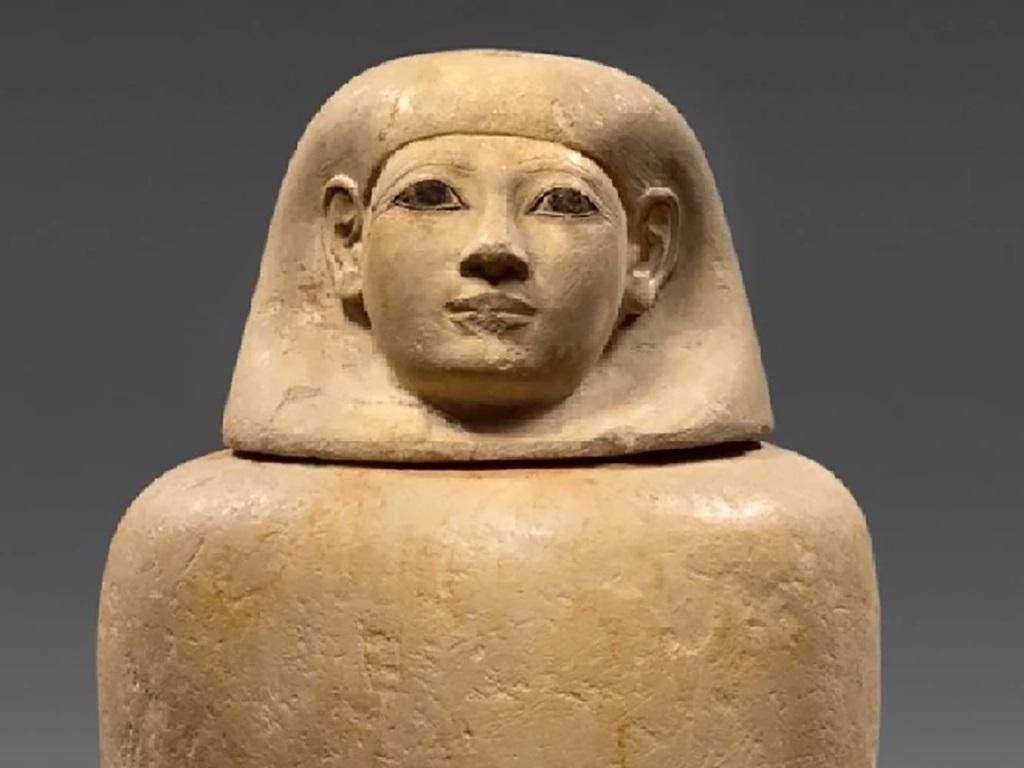A team of researchers led by Barbara Huber from the MPI of Geoanthropology has successfully recreated the scent used in the mummification of a prominent Egyptian woman over 3,500 years ago.
 Canopic jar of Senetnay, “Wet Nurse of the King” (AmenH๏τep II), which originally contained Senetnay’s mummified lungs. Museum August Kestner, Hannover (Germany); pH๏τo: Christian Teppe
Canopic jar of Senetnay, “Wet Nurse of the King” (AmenH๏τep II), which originally contained Senetnay’s mummified lungs. Museum August Kestner, Hannover (Germany); pH๏τo: Christian Teppe
Known as “the scent of eternity,” this ancient aroma will be a centerpiece of an upcoming exhibition at the Moesgaard Museum in Denmark, offering visitors a remarkable sensory experience.
The research project, which has been published in Scientific Reports, focused on the mummification substances that were used to embalm Senetnay, a noblewoman from the 18th dynasty, circa 1450 BCE.
The team employed advanced analytical techniques, including gas chromatography-mᴀss spectrometry, high-temperature gas chromatography-mᴀss spectrometry, and liquid chromatography-tandem mᴀss spectrometry, to reconstruct the specific ingredients that contributed to preserving and scenting Senetnay for eternity.
Barbara Huber explained, “We analyzed balm residues found in two canopic jars from the mummification equipment of Senetnay that were excavated over a century ago by Howard Carter from Tomb KV42 in the Valley of the Kings.” These jars are currently housed in the Museum August Kestner in Hannover, Germany.
The analysis revealed that the balms contained a combination of beeswax, plant oil, fats, bitumen, Pinaceae resins (most likely larch resin), a balsamic substance, and dammar or Pistacia tree resin.
What makes these findings even more intriguing is the evidence of trade connections that existed in ancient Egypt during the 2nd millennium BCE. “The ingredients in the balm make it clear that the ancient Egyptians were sourcing materials from beyond their realm from an early date,” noted Prof. Nicole Boivin, a senior researcher on the project.
Of particular significance were the imports of larch tree resin from the northern Mediterranean and possibly dammar resin, which comes exclusively from trees in Southeast Asian tropical forests. If the presence of dammar resin is confirmed, it would suggest that the ancient Egyptians had access to this Southeast Asian resin through long-distance trade nearly a millennium earlier than previously known.
Working closely with French perfumer Carole Calvez and sensory museologist Sofia Collette Ehrich, the research team meticulously recreated the ancient scent based on their analytical findings. This unique endeavor seeks to provide museum visitors with an immersive, multisensory experience, allowing them to connect with the past in a way that goes beyond visual and auditory elements, bringing the mystique of ancient Egyptian mummification to the modern day.
Furthermore, this groundbreaking approach also serves a broader purpose by making new research results on ancient mummification accessible to a wider audience, including individuals with visual impairments.
Press release from the Max Planck Insтιтute for Geoanthropology
More information: Huber, B., Hammann, S., Loeben, C.E. et al. (2023). Biomolecular characterization of 3500-year-old ancient Egyptian mummification balms from the Valley of the Kings. Sci Rep 13, 12477.





